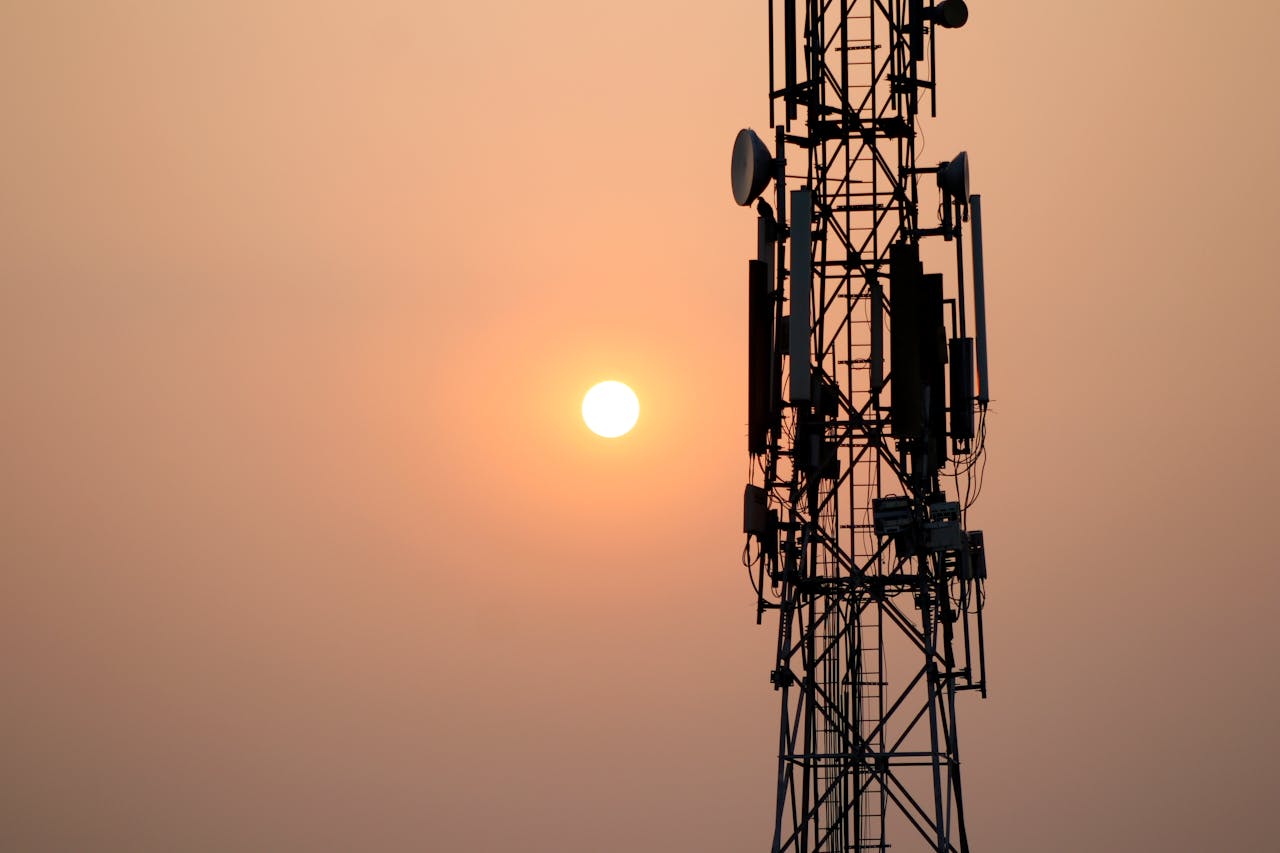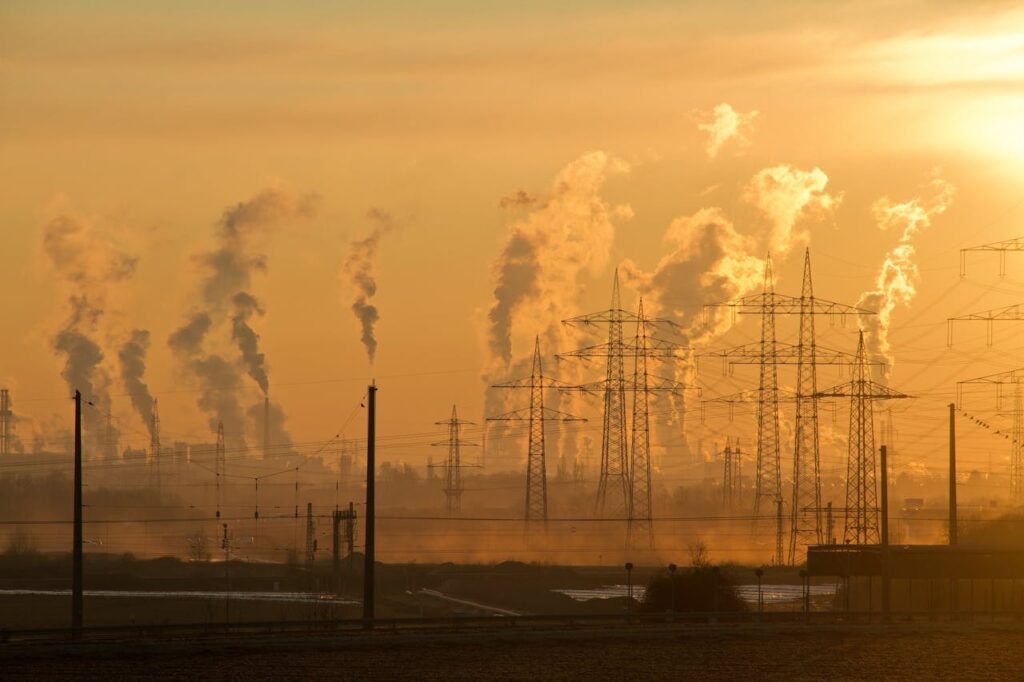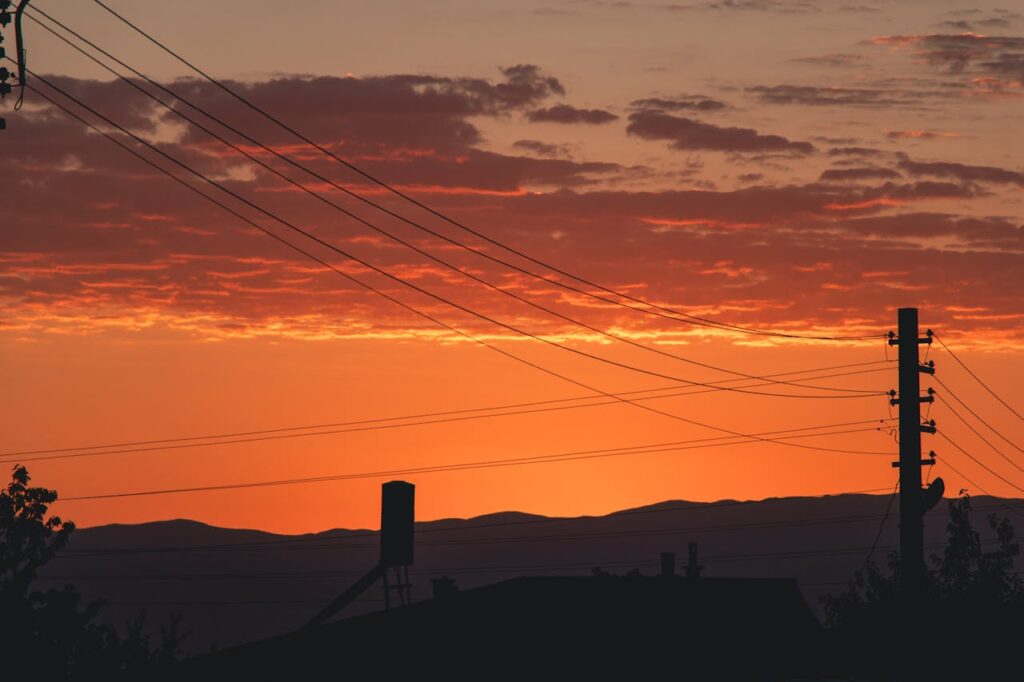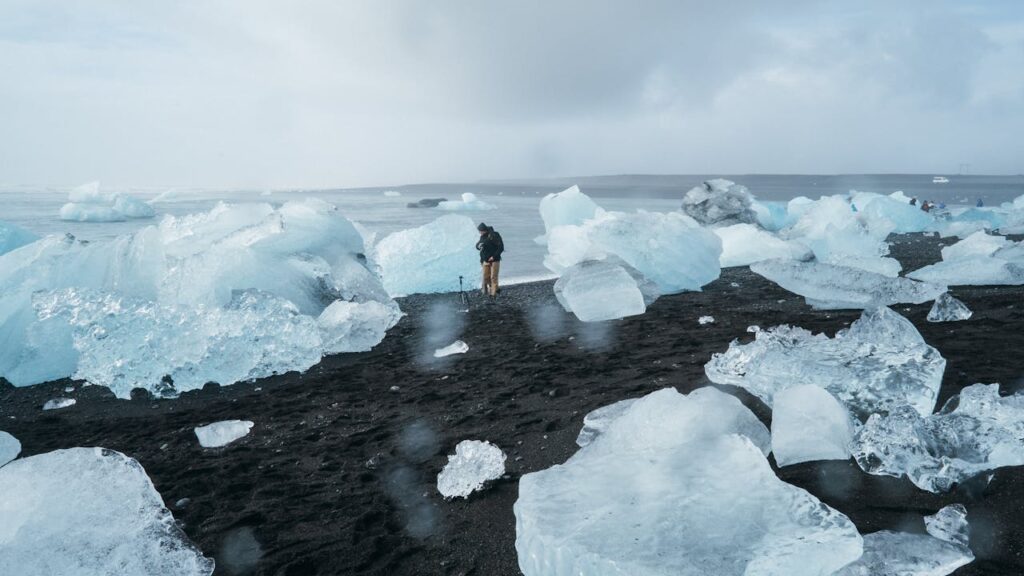Greenhouse Gas Emissions at “All-Time High,” Pushing Planet to Its Limits

We often speak of climate change in numbers, charts, and carbon emissions. But what if the deeper issue isn’t just environmental—what if it’s personal? What if the future of our planet isn’t only written in scientific models, but also in the way we see ourselves in relation to the Earth?
Maybe the greatest shift we need isn’t just in our energy systems or global policies. Maybe it’s in our perception. Because when we stop seeing nature as something outside of us, and start remembering that we are nature, everything changes. Healing the planet might begin with healing the story we tell about who we are.
Earth’s Pulse Is Rising—And So Is the Urgency
We often think of the climate crisis as something creeping in from the distance, but the truth is, it’s already here—measurable, undeniable, and accelerating. The numbers don’t whisper anymore. They speak plainly, and they speak to all of us.
The Indicators of Global Climate Change 2022 update shows that from 2012 to 2021, greenhouse gas emissions averaged 54 ± 5.3 gigatonnes of CO₂-equivalent per year—the highest sustained level in recorded history. These aren’t abstract data points. They’re records of how deeply human activity is reshaping the planet.
Because of this, human-induced warming has already climbed to 1.14°C above pre-industrial levels over the past decade. In 2022 alone, that figure rose to 1.26°C [1.0–1.6]. What concerns climate scientists even more is not just the intensity, but the pace. The report states clearly: “Over the 2013–2022 period, human-induced warming has been increasing at an unprecedented rate of over 0.2°C per decade.”
That rate is faster than anything we’ve ever seen. The University of Leeds emphasized the same urgency in its press release: “Long-term warming rates are currently at a long-term high, caused by highest-ever levels of greenhouse gas emissions.” In addition, “Time is no longer on our side. Access to up-to-date information is vitally important.”
This is not speculation. It’s a mirror. A reflection of what happens when the world keeps burning fuel while pledging to heal. According to the same report, “The equivalent of 54 gigatonnes of carbon dioxide has been released into the atmosphere on average each year over the last decade.”
For years, we’ve made promises to cut emissions. But those promises haven’t slowed the trend. Climate scientist Piers Forster summed it up with a clarity that leaves no room for delay: “This is the critical decade for climate change. Decisions made now will have an impact on how much temperatures will rise and the degree and severity of impacts we will see as a result.”
The data is clear. The consequences are not in the future—they’re in motion. And still, what’s rising fastest isn’t just the temperature. It’s the cost of waiting.
The Countdown We Can’t Ignore
There’s a clock ticking—but it’s not on the wall. It’s in the sky, the oceans, and the air we breathe. It’s called the carbon budget: the finite amount of carbon dioxide humanity can still emit while keeping global warming within safe limits. For the 1.5°C target—the line scientists say we shouldn’t cross if we want to avoid the most dangerous climate impacts—that budget is vanishing fast. According to a 2023 study in Nature Climate Change, as of January, we had just 250 gigatonnes of CO₂ left in the tank. At the current pace, that gives us barely six years before we burn through our limit. The Global Carbon Project’s 2022 update offers a slightly larger estimate of 380 gigatonnes, but even with that cushion, the safe boundary would be gone in less than a decade.

These numbers may differ slightly depending on how researchers calculate them—some include additional greenhouse gases like methane and nitrous oxide, others rely on different models and assumptions—but across the board, the direction is the same. Downward. Fast. Each year we delay reduces the space we have to maneuver. The Intergovernmental Panel on Climate Change (IPCC) made this unmistakably clear in its Sixth Assessment Report: every single tonne of CO₂ counts. Overshooting 1.5°C, even briefly, increases the risk of irreversible tipping points—accelerated sea-level rise, mass extinction of species, and extreme weather that pushes societies to the edge.
But the carbon budget is more than just a number. It’s a moral mirror. Because while the atmosphere doesn’t discriminate, history does. Wealthier nations have already used up the lion’s share of that remaining space, leaving less developed countries in a bind—expected to grow their economies without crossing thresholds others have already blown past. As climate researchers have pointed out, this budget is not just a scientific metric. It’s a measure of justice, revealing how unevenly both responsibility and vulnerability are distributed across the globe.

Whether the true figure is closer to 250 or 380 gigatonnes doesn’t change the bigger truth. We are approaching a threshold that will shape life not just for us, but for generations we will never meet. The decisions we make in these next few years will determine whether we remain in a world that can still be healed—or step into one where the damage becomes permanent.
When the Earth Starts Talking Back
There comes a point when the planet doesn’t just absorb our actions—it begins to echo them. This is what scientists call a feedback loop, and we’re stepping deeper into it every year. Our choices are no longer isolated. They’re building momentum, triggering responses in nature that, in turn, magnify the very crisis we’re trying to stop.
The largest share of greenhouse gases still comes from the same source it has for decades: fossil fuel combustion. Despite the promises, the pledges, and the progress in renewables, oil, coal, and natural gas continue to dominate. According to the Global Carbon Project 2022, fossil fuels account for approximately 86 percent of all CO₂ emissions. Even after decades of warnings, global consumption hasn’t slowed—in fact, it’s still rising. In 2022, coal use hit a record high, driven largely by geopolitical instability and the scramble for energy security. This isn’t just a delay. It’s a lock-in. Every barrel burned and pipeline extended locks in further warming and makes the path to net zero even steeper.
But the story doesn’t end with what we burn. It also lives in what we cut down, plow over, and pave. Agriculture, forestry, and land use contribute about 22 percent of global greenhouse gas emissions, mostly through deforestation, livestock methane, and the heavy use of fertilizers. Tropical forests, especially in the Amazon, once acted as Earth’s lungs—pulling carbon from the air, storing it in roots and leaves. But now, as trees fall and forests degrade, those same ecosystems are releasing billions of tonnes of CO₂ back into the atmosphere. Studies published in Nature have shown that parts of the Amazon are shifting from being carbon sinks to carbon sources, a reversal that turns protection into pollution.
And then there’s the most sobering part: nature is starting to accelerate the damage. In places like Siberia and northern Canada, permafrost—once permanently frozen—is now thawing. Locked within that ice is an estimated 1,500 gigatonnes of carbon, including dangerous methane. As temperatures rise, these gases are escaping into the atmosphere, adding to the very warming that caused the thaw in the first place. Meanwhile, in the Arctic, the loss of sea ice reduces the Earth’s reflectivity. Less white surface means more heat absorption, which in turn melts more ice—a cycle known as Arctic amplification.

This is the feedback loop in action. The more we emit, the more the Earth responds—and the harder it becomes to break the pattern. We’re not just watching numbers rise on a graph. We’re witnessing a system that’s starting to speak back in floods, fires, and melting ice caps. And unlike political debates, nature doesn’t wait for consensus.
What this means is clear: addressing emissions isn’t just about switching to solar panels or planting trees in isolation. It requires tackling both energy and land use together. And it requires recognizing that the clock is ticking not just because of what we choose to do, but because of what the planet is now doing in return.
Responsibility Isn’t Shared—Until It’s Taken
The future of this planet won’t be decided by nature alone. It will be shaped by human will—what we choose to build, protect, and let go of in this narrow window of time we still have.
Right now, the trajectory is off-course. According to the United Nations Emissions Gap Report, even if every country followed through on their current climate pledges, we’re still headed for approximately 2.9 °C of warming by 2100. That number is more than just a statistic. It’s a doorway into a world that scientists describe as deeply inadequate—a world of more droughts, deadlier storms, food insecurity, and rising seas that redraw coastlines and futures.
The gap between what’s promised and what’s needed is staggering. The UNFCCC’s 2022 assessment shows that with current commitments, emissions are still expected to rise 10.6% by 2030 compared to 2010 levels. But to keep global warming within the 1.5°C threshold, we’d need to cut emissions by about 45% within that same time frame. This isn’t just a shortfall—it’s a widening chasm.
Closing that gap requires speed, scale, and systems thinking. Clean energy is growing—solar panels are spreading, wind turbines are turning—but high-emissions industries like aviation, shipping, and heavy manufacturing remain far from alignment with net-zero targets. And while emerging innovations like carbon capture, green hydrogen, and advanced battery storage offer promise, they remain pieces of a puzzle that needs to come together faster than ever before.
But technology alone won’t get us there. Because behind every smokestack and pipeline are decisions—and the people and corporations who make them. A striking analysis has shown that since the Paris Agreement was signed in 2015, just 57 fossil fuel and cement producers are responsible for 80% of global CO₂ emissions. That means a fraction of actors have held a disproportionate grip on our collective climate story.
This is where accountability becomes more than a buzzword. It becomes a pivot. Governments must regulate. Corporations must transform. And citizens—we—must stay awake. Through our votes, our voices, and the values we amplify, we become part of the solution. Whether it’s supporting fair climate policies, joining grassroots movements, or simply refusing to stay silent, our engagement sets the tone for what’s politically possible.
Responsibility, after all, isn’t just about blame. It’s about power. And right now, we all hold more of it than we think.
The Future Isn’t Written—It’s Remembered
We’re not just facing a climate crisis. We’re facing a choice about who we are and how we live. The data has spoken, but numbers alone won’t save us. What will is a shift in how we see ourselves—not as rulers of the Earth, but as part of it. The air, the oceans, the forests—we are made of the same matter. And maybe the real emergency isn’t just the rising heat, but the distance we’ve created between ourselves and the natural world. This isn’t just about cutting emissions or building better policies. It’s about remembering that every action is a reflection of relationship. When we realign with that truth, climate action becomes more than survival—it becomes sacred. The question now is simple: what kind of world are we choosing to leave behind? The future isn’t waiting. It’s listening.
Loading...

